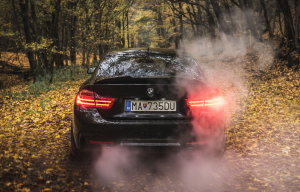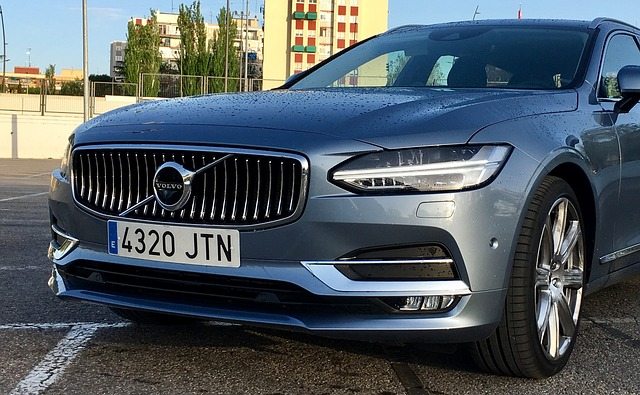When cleaning the inside of a car, people often forget to clean the ceiling, which is also called the headliner. In time, dirt and stains will show up on the headliner, making your car look older. Additionally, it would absorb scents and smoke that make driving uncomfortable.
The headliner should be cleaned as part of your semiannual or annual auto detailing. You may save money by doing it yourself rather than hiring a professional detailer. The method for cleaning a car’s headliner would depend on its condition.
To get rid of small stains, you might only need a fabric cleaner and a cloth. It is necessary to spray the whole surface of the headliner and gently press harder or bigger stains with a smell. And a very soiled headliner must be cleaned with a steam cleaner.
Although there are several procedures for cleaning a vehicle’s headliner, all of them must be performed with care to prevent damage.
What materials do I need to clean the headliner?
Required material
- Microfiber Material
- Bristle-Free Brush
- Automotive Headliner Cleaner
- Spray Bottle
- Vapor Cleaner
- Vacuum Cleaner
- Fans
Microfiber Material
Whether you intend to lightly touch a few areas or clean the whole surface of the car roof, a microfiber cloth will be required. This would be used to remove debris and wipe away stains during spot cleaning. In surface cleaning, this would be useful for eliminating extra moisture after carefully scrubbing the whole headliner.
Bristle-Free Brush
In all techniques of cleaning a headliner, a soft brush would be necessary. It would be used to remove loose material during spot cleaning, scrub the whole headliner during surface cleaning, and scrub after steam washing during a thorough cleaning. Therefore, prepare a soft-bristled brush for any cleaning activity you will do.
Automotive Headliner Cleaner
The type of stain on your vehicle’s headliner will determine the cleaning you require. A standard upholstery cleaner will remove water-based stains such as soda and coffee. Alternatively, you may create a general cleaning solution by combining warm water, white vinegar, and liquid soap.
Alcohol and lacquer thinner may be used for oil-based stains such as grease, ink, crayon, and cosmetics.
Spray Bottle
There are two sorts of car cleaning solutions: concentrated and ready-to-use. If your auto upholstery cleaner is highly concentrated, you may need a separate spray container to dilute it.
Vapor Cleaner
If your headliner is really unclean and odorous, a steam cleaning is required. The heated steam generated by a steam cleaner’s cleaning solution is capable of eliminating stubborn stains and unpleasant odors.
Vacuum Cleaner
In addition to the steam cleaner and soft-bristled brush, you would also need a vacuum cleaner to capture some of the dirt removed by brushing during a thorough cleaning.
Fans
It is crucial to dry the headliner thoroughly after performing a thorough cleaning, as prolonged soaking can break the adhesive, separate the headliner from the automobile, and promote the growth of mold and mildew. A few fans might be useful for drying the headliner after a thorough cleaning.
Cleaning Headliner in Car Smoke Through Spot Clean
There are three distinct ways to clean the headliner. And the state of your headliner will determine the best technique for you to use to clean your car’s headliner.
The first option is spot cleaning, which should be used if the headliner is not filthy and has just tiny stains.
The second step is a surface clean, which would be necessary if the spot clean failed or if your headliner had more stains and began to emit unpleasant odors.
The final approach, a thorough cleaning, should only be used if the headliner is exceedingly dirty and smelly.
When a headliner is highly unclean and odorous, it is vital to do a thorough cleaning, but doing so incorrectly carries the danger of ruining it. The glue on the headliner can melt if there is too much heat and moisture, which can cause it to sag and grow mold and mildew. Therefore, it should only be used as a last option and with prudence.
Follow a few straightforward actions to complete the essential approach for your headliner. They are listed below:
Remove Loose Debris With a Microfiber Cloth or Soft-Bristled Brush
You may remove apparent loose dirt from the headliner by cleaning or brushing it away with a microfiber cloth or a soft-bristled brush, respectively. Simply avoid rubbing the obvious dirt deeper into the fabric of the headliner. Use cotton swabs or a scrub brush to remove all loose particles.
By using a microfiber cloth sprayed with upholstery cleaner, blot the stain.
Turn your microfiber cloth over and lightly saturate a tiny area of it with upholstery cleaning. Then, wipe the stain gently with the moist section of the towel.
Since you are simply eliminating a little stain, you only need to apply the vehicle ceiling cleaner to the surface of the headliner. There is no need to allow the cleaner to penetrate.
Remove Excess Moisture, Allow to Dry, and Examine the Stain
After getting rid of the stain, blot the area with a clean, dry piece of your microfiber cloth to get rid of any remaining moisture. Then, once the wet area has completely dried, examine whether the stain has been completely eliminated.
Cleaning Headliner in Car Smoke Through Surface Clean
Evenly Spritz Upholstery Cleaner over the Entire Headliner
The most effective cleaning for this approach would be an upholstery cleaner aerosol. This sort of cleaning has a foaming action, which efficiently loosens debris embedded beneath the surface of the headliner.
Spray the aerosol upholstery cleaning evenly on the headliner, but avoid saturating it. You must pay specific attention to the extremely unclean edges, crevices, and corners surrounding the lights, overhead console, and sunroof.
Allow the Cleaner to Rest
Allow the cleaner to work on the stains by allowing it to sit on the headliner. In line with the time indicated in the product’s instructions, you must do this task. This prevents damage caused by excessive spraying and cleaning.
The more carefully you handle your headliner, the less likely it will become damaged. You may always repeat the cleaning process if you are not happy with the outcome.
Use a Soft-Bristled Brush to Gently Scrub the Entire Headliner.
Using a soft-bristled brush, scrub the whole headliner until it is spotless. Ensure that you clean the whole headliner to create an even finish. If you do not brush every piece, it may become apparent after the vehicle has dried.
Allow the Headliner to Dry Completely
Use a microfiber cloth, if required, to wipe excess moisture from the headliner. Then allow it to air-dry. Depending on how wet it is, drying it might take up to two hours.
Repeat Steps 1 through 4 if stains persist.
Difficult stains may need a second cleaning. However, if the second cleaning does not result in a clean headliner, you will need to do a thorough cleaning of the car’s headliner.

Cleaning Headliner Through Deep Clean
Pour Upholstery Cleaner and Water into the Steam Cleaner
You must prepare the steam cleaner for usage by adding vehicle interior roof cleaner and water in accordance with the steam cleaner’s instructions. Check whether the steam cleaner demands the use of a specific cleaning solution.
Attach the appropriate steam cleaner attachment
The suitable attachment for the task would then be attached to the steam cleaner. Ideally, it would be tiny and nonabrasive.
Allow the Steam Cleaner to Preheat
Wait for the steam cleaner to heat up after turning it on. The amount of time required for a steam cleaner to heat up varies by model; thus, you need to consult the handbook to see how long it takes for your steam cleaner to heat up.
Apply cleaner and steam to the headliner, then brush and vacuum it.
Once the steam cleaner has reached the desired temperature, the headliner may be cleaned. The headliner would initially be pretreated with cleaner-induced steam. Then, you would clean the headliner with a soft-bristled brush and vacuum it.
Part by part, you should steam clean the headliner, holding the steamer momentarily on each section to eliminate smells and stubborn stains. You must act swiftly to avoid oversaturating any part of the headliner.
The longer you keep the steamer on a particular area, the deeper the steam will enter and the more the headliner’s adhesive will melt. This will certainly cause the headliner to droop.
Allow the Headliner to Completely Dry
After carefully cleaning your headliner, you must let it air-dry so that the adhesive does not fail and mold and mildew do not form. Leave the windows and doors of your vehicle open, and use a couple of fans to speed up the drying process.
Rub a Clean Hand Across the Headliner to Remove Scratches.
After cleaning and drying a car’s headliner, you may observe minor scuff marks. You may easily remove them by passing a clean hand over them, but only after the headliner has dried fully.
Conclusion
Knowing the many ways for cleaning a car’s headliner will help you maintain a clean and odor-free vehicle. It would also save you money because you wouldn’t need to have your car detailed. Just follow the necessary instructions for the sort of cleaning you desire.
How did you discover this guide? Share your thoughts in the comments section. If you found this article to be useful, you may wish to share it with others so that they too may learn about automobiles.

Chris Miller is an auto journalist who specializes in reviewing new cars and providing helpful advice on family vehicles. He has a passion for cars and enjoys sharing his knowledge and expertise with others.





